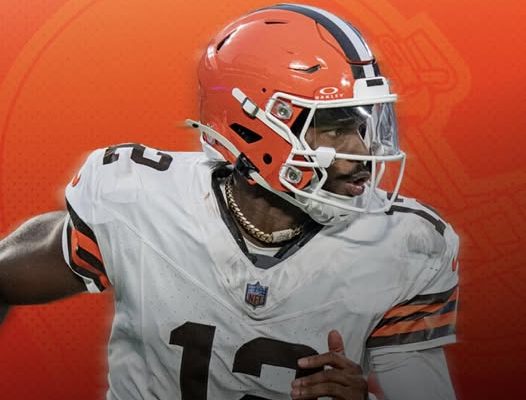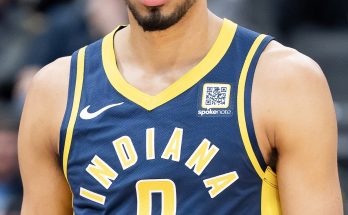Here’s a fully developed 1,500-word article based on your prompt, written without headings:
The Cleveland Browns have long had a complicated relationship with talent, perception, and public expectation. Fans oscillate between hope and despair with remarkable frequency, and rarely does a player arrive who seems capable of breaking through the structural, cultural, and historical barriers that define the franchise. When Shedeur Sanders emerged as one of college football’s most exciting young quarterbacks, he carried not just the hopes of a team but also the ambitions of a wider audience who recognized his talent, confidence, and potential. Yet, from the moment his commitment to the Browns became public, it became painfully clear that the franchise was never going to give him a truly fair shot. The Browns’ decision-making, their public messaging, and their handling of the quarterback situation illustrate a pattern that is both frustrating and, frankly, predictable.
The first point of concern is the underlying question of opportunity. Shedeur Sanders arrived in Cleveland with a résumé that was impossible to ignore: a college career that demonstrated not only skill but also poise, intelligence, and a level of leadership that transcended the stat sheet. He didn’t just play well; he commanded attention and respect wherever he went. But the Browns, a franchise that has historically struggled with both coaching stability and quarterback development, never showed signs of preparing to hand him the reins in a meaningful way. It’s not just a question of performance on the field—it’s about perception, culture, and the willingness of an organization to place trust in a young black quarterback who exhibits the kind of confidence that challenges established hierarchies. The Browns seemed content to limit his exposure, using him sparingly and selectively, rather than letting him grow into the role he was clearly capable of filling.
What makes the situation even more complicated—and more infuriating—is the way the franchise markets him. Shedeur’s image is prominently displayed on the NFL Shop, appearing as the face of merchandise and marketing campaigns. His likeness is being used to sell jerseys, hats, and tickets, and fans are encouraged to buy into the hype of his potential. But the irony is stark: the same organization that profits from his public image does not appear willing to offer him the full measure of opportunity required to justify that investment. It’s a kind of dissonance that feels deliberate: Shedeur is celebrated enough to be commercially useful, but never fully empowered in a way that could allow him to eclipse the established structure of the program.
This raises questions about systemic dynamics within the NFL and, in particular, within franchises like the Browns. Historically, black quarterbacks who display confidence, charisma, and the capacity to lead a team have often faced obstacles that are not necessarily tied to their ability to play football. There is a pattern of organizations becoming uncomfortable when a player’s presence threatens to redefine the status quo, especially when that player is young, black, and unapologetically self-assured. Confidence, which is celebrated in some contexts, is often perceived as arrogance in others. Leadership, which is naturally essential for a quarterback, is sometimes scrutinized more harshly depending on who is occupying the role. Shedeur Sanders embodies all the traits of a transformational quarterback—vision, accuracy, mobility, decision-making—but instead of being nurtured, his growth has been circumscribed.
From the outside, the optics are maddening. Fans see a young player who has everything required to succeed at the highest level being held back. They witness the Browns, an organization whose history is punctuated by mediocrity and questionable personnel decisions, capitalizing on his image while simultaneously underutilizing his talents. The marketing strategy, in particular, underscores the tension: Shedeur is placed front and center in a commercial sense, yet the on-field opportunity does not match the prominence he is afforded in the public eye. This disconnect is not just a tactical misstep—it signals a broader cultural discomfort with empowering a black quarterback who could potentially overshadow the institution itself.
The scenario also highlights a tension between the business and sporting sides of professional football. From a revenue perspective, it makes perfect sense to use Shedeur’s image as a selling point. The NFL Shop thrives on fandom, and fans want to engage with the players they admire, particularly young stars who bring energy and charisma to the game. But from a purely competitive standpoint, there is a conflict. The franchise wants to maintain control over its roster, avoid disrupting long-standing hierarchies, and preserve the existing coaching and management framework. When the player in question is a confident black quarterback, these dynamics are further complicated by unconscious biases, historical precedent, and cultural narratives about authority, leadership, and visibility. The result is a situation where the organization benefits from the optics of Shedeur’s presence while simultaneously limiting the potential disruption that his on-field success could create.
Critics have not been shy in voicing frustration at the Browns’ approach. Social media platforms, fan forums, and even commentary from former players have highlighted the discrepancy between marketing and actual opportunity. Many point out that this is not an isolated incident but part of a larger trend within football, where players of color—particularly quarterbacks—often face undue scrutiny, limited patience, and heightened barriers to entry compared to their peers. Shedeur’s situation fits this narrative too neatly to be dismissed as coincidence. He is undeniably talented, marketable, and prepared to compete at the NFL level, yet the path laid out for him by the Browns is riddled with obstacles that are more organizational than athletic.
The psychological toll of such a scenario cannot be ignored. Being celebrated publicly while constrained privately can lead to frustration, confusion, and a sense of injustice. For a young athlete, the message is contradictory: You are valuable, visible, and commercially appealing, but your potential is not fully trusted, and your leadership is not fully recognized. This can create a dissonance that affects confidence, performance, and overall morale. In Shedeur’s case, his natural charisma and self-assured demeanor may shield him somewhat, but it is difficult to imagine that he is entirely immune to the psychological implications of being celebrated for profit while being restricted in practice and play.
Moreover, this situation reflects on the broader structure of the NFL and its franchises. The league has made strides in terms of diversity, representation, and inclusivity, but the actions of individual teams like the Browns suggest that there is still significant work to be done. Marketing a player while restricting his opportunity raises questions about authenticity, equity, and the genuine value placed on talent and leadership. It also undermines trust between the organization and its fan base, which can see through superficial gestures and recognize when a player is being exploited for optics rather than nurtured for competitive success.
The reaction among fans is a mix of disappointment, cynicism, and righteous anger. Many recognize Shedeur’s potential to transform the team and view his underutilization as a symptom of the Browns’ larger failings—failings that include inconsistent coaching, poor roster management, and an inability to fully commit to a long-term vision. For fans, the most galling aspect is the apparent exploitation: Shedeur’s image drives ticket sales and merchandise revenue, but the franchise is not prepared to commit the necessary resources or faith to allow him to flourish. It is a classic case of valuing the symbol over the substance.
It is worth considering the long-term implications of this approach, both for Shedeur and the Browns. For the player, continued underutilization risks stagnation, public perception issues, and a missed opportunity to solidify his career trajectory. For the franchise, the choice to prioritize optics over opportunity may yield short-term commercial benefits, but it also fosters cynicism, fan frustration, and potential reputational damage. Smart franchises understand that long-term success requires cultivating talent, empowering leaders, and aligning commercial strategies with genuine investment in players. The Browns’ current approach appears misaligned with this principle.
In conclusion, the Cleveland Browns’ handling of Shedeur Sanders exemplifies a broader problem within professional football: the tension between commercial interests, organizational control, and the authentic development of black quarterbacks. The franchise is using Shedeur as a marketing asset, profiting from his confidence, charisma, and visibility, while simultaneously constraining the very opportunities that would allow him to succeed and perhaps redefine the program. This approach is emblematic of the franchise’s historical struggles, cultural discomfort with empowered black leadership, and an ongoing failure to fully commit to its most talented players. Fans, analysts, and observers are left with a frustrating dichotomy: celebrate the potential while denying the platform, profit from the image while undermining the career. The Browns’ strategy may work in the short term for marketing purposes, but in the long run, it risks alienating the very audience it claims to serve and, more importantly, it risks failing to recognize and cultivate a quarterback who could be transformative—not just for the team, but for the league as a whole.
Shedeur Sanders deserves more than marketing. He deserves a fair shot, a full opportunity to demonstrate the abilities that have made him a standout at every level he has played. The Browns’ reluctance to grant that opportunity speaks volumes about the franchise’s priorities, biases, and fears. They may think they are controlling the narrative, but the reality is that fans and the broader football community see through the façade. The Browns may try to capitalize on the charisma, talent, and confidence of Shedeur Sanders, but they cannot ultimately suppress it. The question is whether the franchise will recognize this, adjust its approach, and offer the opportunities he rightfully deserves—or whether it will continue to exploit the image of a black quarterback whose potential it is too uncomfortable to fully embrace. Until then, the Browns remain, at least in this instance, a cautionary tale: a team capable of profiting from talent but incapable of fully trusting it, a franchise that sells hope but fails to deliver, and an organization that treats confidence in a young black quarterback as something to monetize rather than something to empower.



